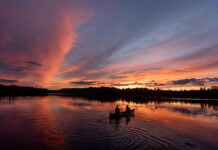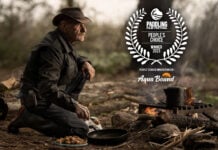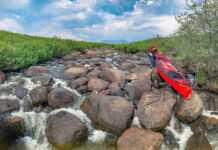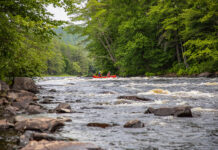After completing a 62-day, 1,200-mile traverse of the contentious United States-Mexico border, Ben Masters came to a simple conclusion: “I don’t see how you could build a border wall more difficult to cross than this landscape,” says the Austin, Texas-based filmmaker.
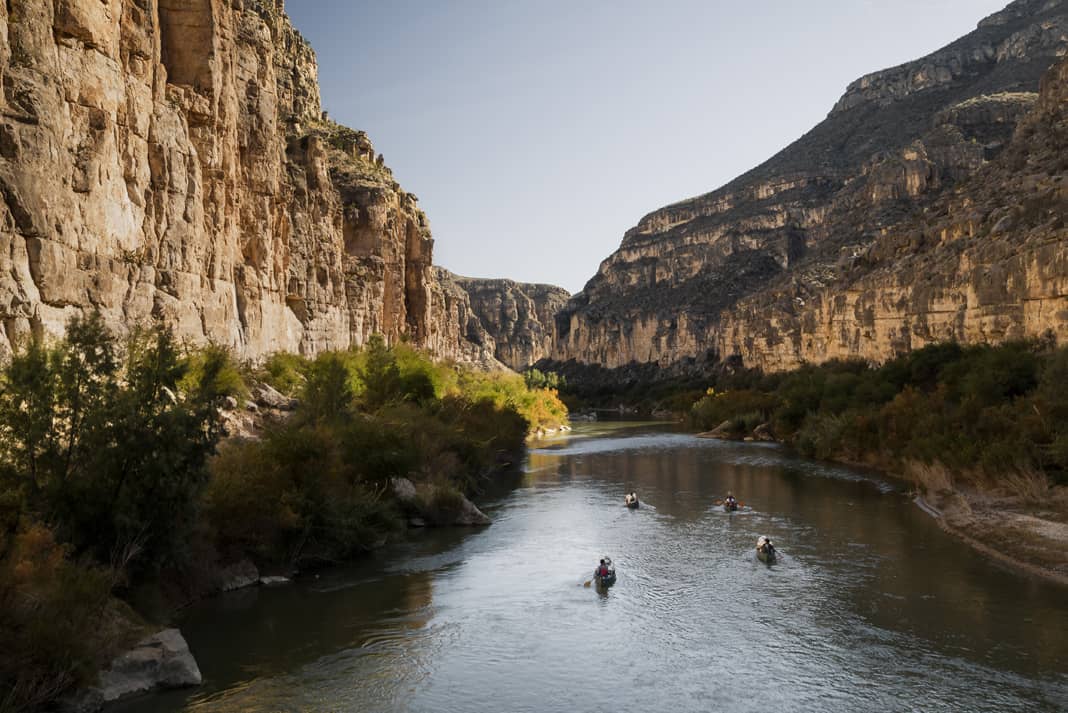
Masters made the journey in the winter of 2018 with National Geographic wildlife photographer Filipe DeAndrade, Rio Grande River guide Austin Alverado, ornithologist Heather MacKay and parks and wildlife activist Jay Kleberg. The team traced the length of the Rio Grande from El Paso to the Gulf of Mexico, mountain biking muddy terrain, testing the limits of Masters’ trail horses on mountains of loose rock, and surviving numerous close calls while paddling overloaded canoes in the whitewater canyons of Big Bend National Park. Masters describes the expedition as a fact-finding mission “to explore how a 30-foot wall built on the U.S. side of the river would impact wildlife dispersals, water access, private property rights, immigration, public lands, and border culture.”
The resulting cinematic documentary, The River and The Wall, premiered at the 2019 South by Southwest Film Festival in March. “For hundreds of miles, the Rio Grande and the border is flanked by massive canyons and gnarly mountains,” says Masters. “Constructing a man-made wall anywhere close to the river in many of these stretches is not physically feasible.”
Large swathes of the rugged borderlands are devoid of human life and provide habitat for some of the greatest biological diversity on the continent, including wolves, black bears and hundreds of bird species, all of which travel freely between the U.S. and Mexico. The borderlands also contain some of the last remaining public lands in Texas. Masters presents the scenic, incredibly biodiverse Big Bend as an ideal candidate for a binational peace park—initially envisioned by former U.S. president Franklin Roosevelt—similar to existing protected areas along the Canada-U.S. border, to preserve the unique landforms and wildlife that do not recognize political boundaries.
Masters includes interviews with Texas Congressmen representing both sides of the political aisle; both Republican Will Hurd and Democrat Beto O’Rourke describe integrative solutions to immigration and border security rather than constructing a monumental wall. Near the Gulf of Mexico, where the Rio Grande supports some of the continent’s most fertile agricultural lands, Masters speaks with multi-generational farmers who recoil at the prospect of a federal “land grab.” Since the wall would be constructed on American soil, it would effectively relinquish a corridor of land to Mexico.
Washington is already extending the existing 700 miles of border fence. Masters says his team was among the last people to experience parts of the Rio Grande where new barriers are currently under construction. “When we filmed the documentary, we often thought ‘I wonder if this will be the last image of this place before a wall is built?’” he says. “Hopefully, people in the future will be able to look at our images and see how incredible the Rio Grande and the landscapes she carved were before a wall was constructed.”
“I wish people would go down to the border and see it for themselves,” adds Masters. “It’s an amazing place with beautiful landscapes, beautiful wildlife, and rich culture. The border I see in the media isn’t the border we witnessed on our journey or the border I know. You should go there.”
The River and the Wall from Gravitas Ventures on Vimeo.
The natural canyon walls of the Rio Grande were formed by tectonics and erosion, free of charge. Photo: Courtesy The River and The Wall



